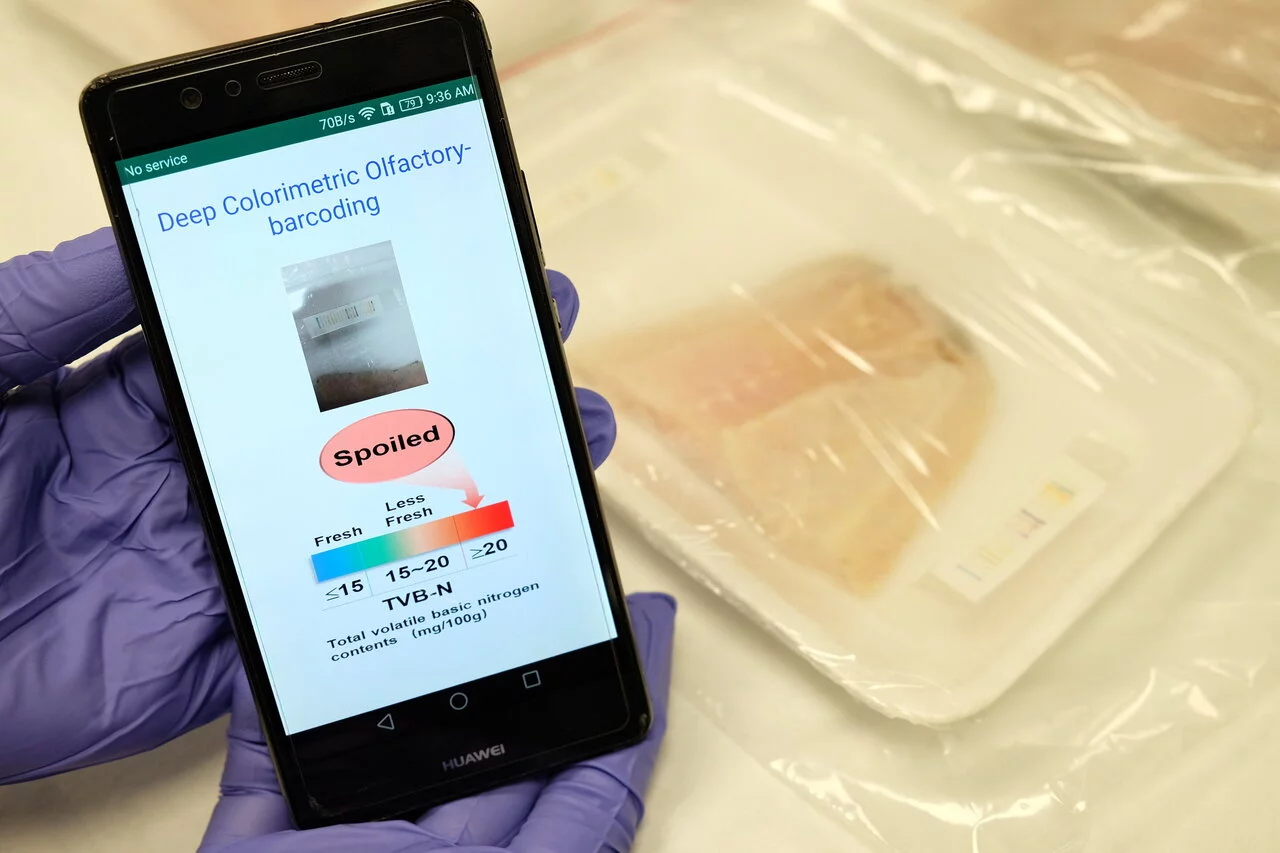WEB DESK, July 12(ABC): A team of scientists led by Nanyang Technological University, Singapore (NTU Singapore) has invented an artificial olfactory system that mimics the mammalian nose to assess the freshness of meat accurately.
The ‘electronic nose’ (e-nose) comprises a ‘barcode’ that changes color over time in reaction to the gases produced by meat as it decays, and a barcode ‘reader’ in the form of a smartphone app powered by artificial intelligence (AI). The e-nose has been trained to recognize and predict meat freshness from a large library of barcode colors.
When tested on commercially packaged chicken, fish, and beef meat samples that were left to age, the team found that their deep convolutional neural network AI algorithm that powers the e-nose predicted the freshness of the meats with a 98.5 percent accuracy. As a comparison, the research team assessed the prediction accuracy of a commonly used algorithm to measure the response of sensors like the barcode used in this e-nose. This type of analysis showed an overall accuracy of 61.7 percent.
The e-nose, described in a paper published in the scientific journal Advanced Materials in October, could help to reduce food wastage by confirming to consumers whether meat is fit for consumption, more accurately than a ‘Best Before’ label could, said the research team from NTU Singapore, who collaborated with scientists from Jiangnan University, China, and Monash University, Australia.
Co-lead author Professor Chen Xiaodong, the Director of Innovative Centre for Flexible Devices at NTU, said: “Our proof-of-concept artificial olfactory system, which we tested in real-life scenarios, can be easily integrated into packaging materials and yields results in a short time without the bulky wiring used for electrical signal collection in some e-noses that were developed recently.
“These barcodes help consumers to save money by ensuring that they do not discard products that are still fit for consumption, which also helps the environment. The biodegradable and non-toxic nature of the barcodes also means they could be safely applied in all parts of the food supply chain to ensure food freshness.”
A patent has been filed for this method of real-time monitoring of food freshness, and the team is now working with a Singapore agribusiness company to extend this concept to other types of perishables.

























